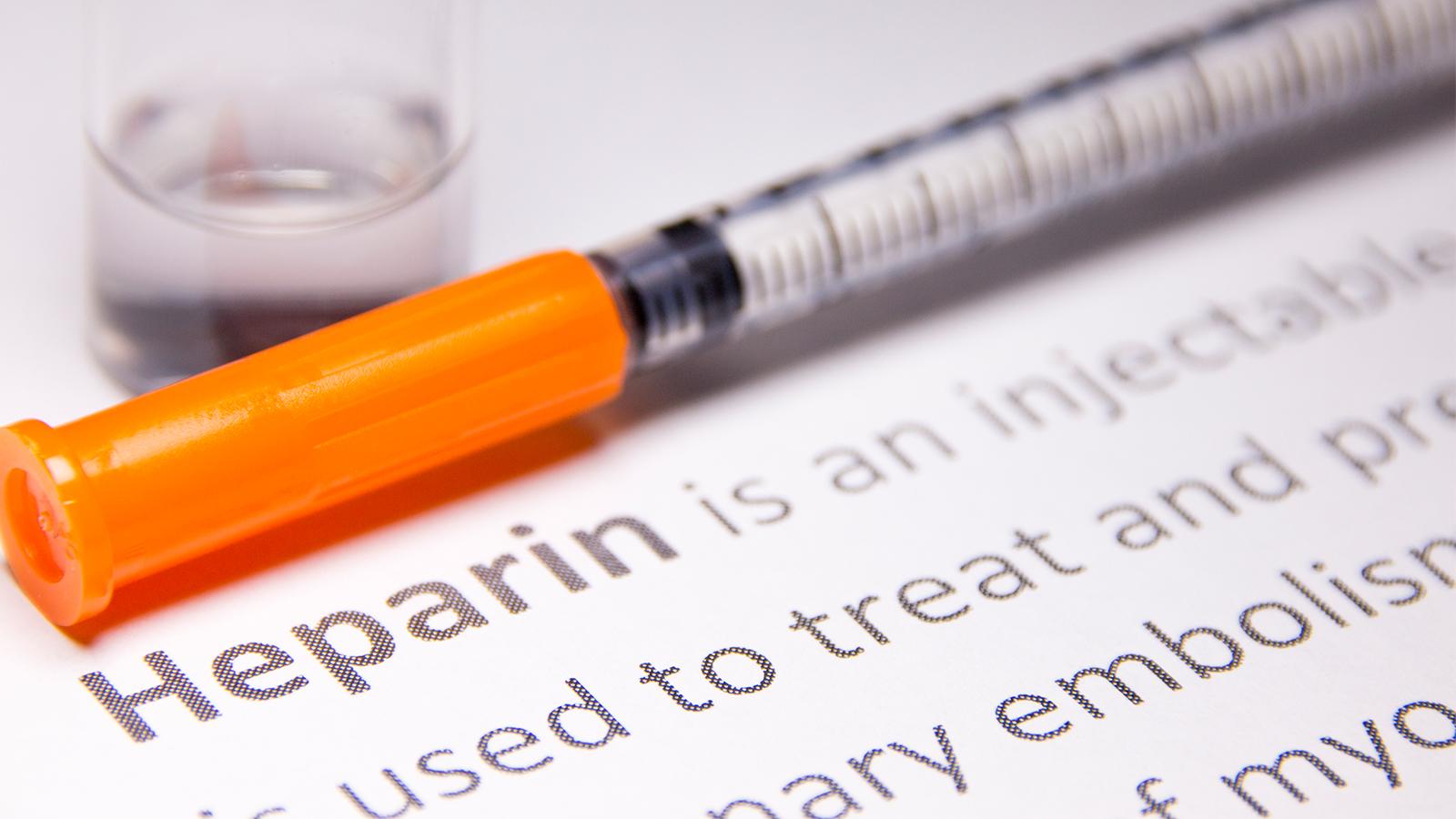The patented finding could transform the way the world produces the blood thinner heparin
March 19, 2024

Heparin, the world’s most widely used blood thinner, is used during procedures ranging from kidney dialysis to open heart surgery. Currently, heparin is derived from pig intestines, but scientists at Rensselaer Polytechnic Institute have discovered how to make it in the lab. They have also developed a path to a biomanufacturing process that could potentially revolutionize how the world gets its supply of this crucial medicine.
“In recent years, with disease and contamination issues disrupting the global supply chain of pig heparin and potentially putting millions of patients at risk, it’s clear we need to diversify the way we make this drug,” said Jonathan Dordick, Ph.D., Institute Professor of Chemical and Biological Engineering, and vice president of Strategic Alliances and Translation at RPI. “Our work will make it possible to manufacture heparin that is both consistently available and safe.”
With their patented process, detailed in a study published in the journal PNAS, the researchers are already working with FDA and have initiated scale-up leading to commercial production.
“While the current study describes the laboratory-scale production of heparin, we are also moving toward a commercial-scale process, affording the same high quality heparin, to generate the drug for clinical studies,” said Robert Linhardt, Ph.D., Ann and John H. Broadbent Jr. ’59 Senior Constellation Professor Emeritus of Biocatalysis and Metabolic Engineering at RPI and a co-author of the study. Both Dordick and Linhardt are members of RPI’s Shirley Ann Jackson Center for Biotechnology and Interdisciplinary Studies.
<“This multidisciplinary research is a prime example of how discoveries made in the lab can successfully translate into new tools to advance global health,” said Shekhar Garde, Ph.D., dean of the RPI School of Engineering.
Recognized by the World Health Organization as an essential medicine, heparin is always in high demand. To meet the need, the intestines of billions of pigs are processed annually, producing about 100 tons of purified heparin. More than 70% of the supply comes from China.
Animal-based products are susceptible to shortages, and heparin is no exception. The 2008 heparin contamination crisis, recurring swine diseases outbreaks, and the supply chain issues of the COVID-19 pandemic have all disrupted heparin availability, prompting researchers to investigate how to make heparin without animals.
At RPI, the quest for non-animal heparin led to the creation of the Heparin Applied Research Center in 2015. Over the next several years, the team of scientists developed a novel method of synthesizing heparin that would not only be virtually indistinguishable from animal-derived heparin but could also be made at scale.
“Heparin was discovered more than 100 years ago, but only recently have we had the techniques to start trying to make it in the lab,” said Dordick, senior author of the study. “Unlike insulin — another very important medicine that used to come from pigs and is now man-made — heparin isn’t just a single protein or molecule, but a complex chain of various carbohydrates. That makes it very hard to synthesize in a way that translates into a more traditional large manufacturing setting.”
Dordick likens synthesizing heparin in the lab to decorating a Christmas tree.
“We start with the core of the heparin structure, which is like the bare tree. Then, using various enzymes, we add molecules — the ornaments, the tinsel, the lights. As you can imagine, there are many ways to decorate a tree, so getting the decoration just right to make heparin is the challenge,” he said.
In recent decades, scientific teams around the world have been attempting to do just that, but without success.
“Past research used native enzymes to replicate what happens in pig intestines to make heparin. However, this produces a tiny amount of heparin and can’t be done at scale. Our biggest achievement was the insight to optimize the enzymes for higher yield and stability,” said Elena Paskaleva, Ph.D., senior research scientist at RPI and one of the study’s co-authors.
“Synthesizing those enzymes in such large scale was uncharted territory for us in an academic lab,” said Marc Douaisi, Ph.D., first author of the study and senior research scientist RPI. “It took a large, coordinated effort across the whole center to synthesize the volume needed to synthesize a product with a structure and biological activity equivalent to the pig-derived drug. At the end of the day, it was exhilarating to know that what we ultimately made matched all the criteria of heparin.”
The discovery is an example of how universities can drive research and development of new life-saving drugs and technologies, Dordick said.
“Our goal was to find an alternative to a drug that’s been on the market since 1935. For a private company, that kind of project would bring too much risk. But a university, especially one like RPI, is the perfect place to pursue this kind of project,” Dordick said.